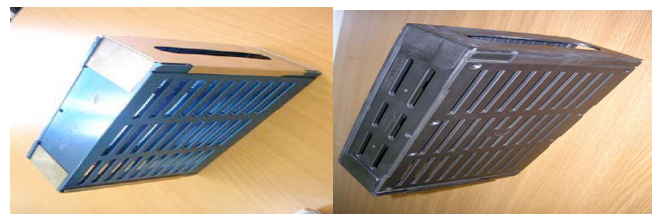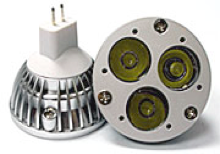Improve plastics’ conductivity with carbon nanotubes
By Manwar Hussein; Edited by Matt DefosseThe high aspect ratio and thermal and electrical conductivity of carbon nanotubes make them an attractive candidate for use in plastic applications requiring conductivity, which is why these fillers are gaining such attention from industries as varied as electrical/electronic, semiconductor, packaging, and automotive.
July 31, 2009
By Manwar Hussein; Edited by Matt Defosse
The high aspect ratio and thermal and electrical conductivity of carbon nanotubes make them an attractive candidate for use in plastic applications requiring conductivity, which is why these fillers are gaining such attention from industries as varied as electrical/electronic, semiconductor, packaging, and automotive.
Conductive element carbon nanotubes (CNTs) are an effective filler because of their good electrical and thermal properties at low loading levels, leading to substantial mechanical property improvement at a relatively low density.
|
The level of conductivity achieved depends on the loading rate of conductive fillers. Because of these fillers’ high aspect ratio (long size grain with nano-sized diameter), CNT particles remain in contact with each other even at low filler levels and thus allow for good conductivity at a relatively low cost and with improved mechanical, thermal, and physical properties. In contrast, spherical conductive fillers only match CNT-loaded compounds’ conductivity at higher loading levels.
Shinil Chemical started development work with CNTs in 2005 and has since patented its dispersion technique, which the supplier of thermoplastic compounds says ensures CNTs are dispersed homogeneously in a polymer matrix to ensure better electrical conductivity and mechanical properties. The surface of end products made with CNT-filled compounds are smooth and reveal no sign of the fillers used; over the years thousands of conductive compounds have been developed in the company for OEMs in the global electronic, semiconductor, and automotive markets.
New development: Bipolar plates for fuel cell separators
An important part of fuel cells are their bipolar plates, also known as interconnects. The main function of bipolar plates is to serve as the electrical contact for the fuel cells and to supply these with gaseous fuel. The fuel cell electrochemically combines air with fuel and converts it directly into electricity. The conversion is similar to that of a conventional battery, except the reducing agent and oxidant are continuously supplied to the cell instead of being contained in the cell. A fuel cell is analogous to a heat engine because its refillable fuel supply is converted into energy.
Current anode/cathode plates are fabricated by machining and densifying graphite, or by adding conductive fillers (typically carbon black [CB], carbon fiber [CF], or metal) to a polymer matrix. High conductivity (E-1~E-2 ohm.cm) is needed in this application. Compressed graphite plates fracture and are easy to break. Conductive plastic compounds with carbon black or carbon fibers are not as brittle but also do not meet graphite’s electrical conductivity, with the sacrifice about E-2~E-1. Shinil Industry says it has been able to develop a compound, trading as Shincon, for injection molding of bipolar plate using its CNTs incorporated into a polymer matrix. Although CNTs remain relatively costly, using CNT-reinforced compounds has proven a cost-saver when compared to the machining cost and time involved with densified graphite plates.
Semiconductor industry’s magazine racks offer potential
Magazine racks are used in the semiconductor industry to handle and dry printed circuit boards (PCBs) with electronic parts or circuits. Metal is the established material for this application as it offers good electrostatic dissipative (ESD) performance. Metal magazine racks, however, are relatively heavy (1.2kg), can be costly. and there is the potential for metal particles to be created during the handling and processing of PCB boards. These are counter to the PCB industry’s desire for lightweight, low-cost magazine racks that do not introduce impurities to the process.
Shinil’s CNT-reinforced compounds are available for manufacture of bakeable (>180oC) magazine rack for semiconductor industries, with these plastic racks lighter (40-45%) than metal ones and showing no sloughing of any particles (due to friction between the PCBs and the magazine body) even after hundreds of iterations. Maybe most significantly, Shinil is now targeting the application with a 40% lower price than metal magazine racks. Many Japanese semiconductor companies have showed their interest and validation of these materials is ongoing at PCB manufacturers.
In another potential application, thermally conductive materials are useful for heat transfer for electrical components, especially products that generate heat during operation. Traditionally, heat removal has been realized using epoxy-based thermoset plastics filled with silica, which has a relatively low thermal conductivity of 1.5 W/mk. In semiconductor devices, high heat dissipation is required for packaging materials. The use of ceramic fillers to enhance the thermal conductivity of molded plastics is well known but the loading rate of these fillers is high (>60%), which makes the materials heavy and costly.
LED lights
Shinil has developed compounds for LED packaging applications using modified thermally conductive ceramic nano-filler in a high-temperature thermoplastic matrix. The loading rate of the modified nano-fillers is lower than that of conventional ceramic fillers, reducing the parts’ weight and cost.
About the author: Manwar Hussain is R&D manager in the Shinil Nano Research Center at Shinil Chemical Industry, a compounder based in Kyongi, South Korea.
About the Author(s)
You May Also Like






